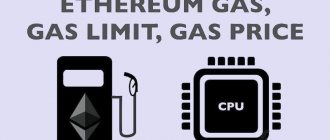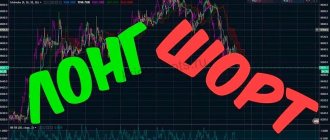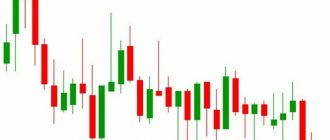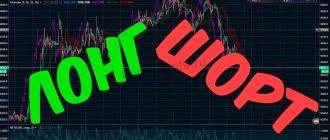P/ B multiplier (analogous to P/BV, P/B ratio - Price Book Value, translation: Price / Book Value) - shows the ratio of the market value of the stock to the current value of net assets (equity). Net assets are defined as what is left over to the owners of a company after paying off their liabilities. Used to assess whether a company's shares are undervalued.
Finding undervalued stocks to buy them as a strategy was proposed by D. Graham and D. Dodd and is called value investing. The calculation of financial multipliers was actively used by Peter Lynch (managing the investment fund Fidelity Magellan Fund). He said that you cannot invest in a company if you do not know its financial condition.
Take our proprietary course on choosing stocks on the stock market → training course
In simple words, the P/B ratio shows how much an investor is willing to pay for the property of an enterprise secured by one share.
Formula for calculating P/B
Formula for calculating the multiplier.
Book value is calculated by subtracting intangible assets and liabilities (current and long-term) from total assets.
Market value is calculated as the company's capitalization.
If the coefficient is <1, then we can conclude that the market values the company lower than its existing assets, i.e. the company is undervalued and can be considered as an investment object.
However, you need to keep in mind that if the ratio is less than 1, this does not mean that you should buy these shares. Perhaps the company has large debt obligations (short-term + long-term loans). There is a risk of bankruptcy.
The ratio can be understood in the same way as how much money investors will get if the company goes bankrupt. This is why it is important to look at your debt structure.
The indicator is often used to evaluate banks, since assets and liabilities almost always correspond to their market value.
What are stock multiples?
Stock multipliers are financial ratios that show the relationship between various financial indicators of issuers.
Analysis of multiples is an important part of the fundamental analysis of any issuer in the stock market. The main goal of such an analysis is to identify undervalued companies in which it is profitable to invest, due to the fact that they can potentially increase in price more than the market as a whole, and, accordingly, bring greater profit to the investor. Thus, analyzing stock multiples is at the core of a value investing strategy.
It is best to compare stock multiples for a given company to industry averages. If the issuer’s performance is better than the industry average, this indicates the advisability of buying its shares; if it is worse, vice versa. Moreover, it is important to analyze not just 1-2, but a whole range of multipliers, because only a comprehensive analysis can give the most accurate signals to buy.
You can view stock multipliers on websites for investors, on exchange websites, in broker applications, or you can calculate them yourself, based on statistics published by issuers. This is not difficult, the calculation formulas are in most cases elementary.
Standard value (what it shows)
The optimal P/B value is in the range of 1-5. If the multiplier is greater than 5, then this indicates that the stock is overvalued, and if it is less than 1, then it is undervalued. Sometimes in the literature you can find statements about overvaluation/undervaluation of shares with values of P/B>2 and P/B<1, respectively.
| Multiplier value | Description |
| P/B<1 | The company is rated as expensive. Investor overpays for shares |
| P/B=1 | The company is fairly valued |
| P/B<1 | The company is undervalued by the market. An investor buys shares below their intrinsic value |
| P/B<0 | The company's liabilities exceed its assets. The emergence of bankruptcy risk |
| P/B>5 | The company's shares are highly overvalued. |
Fundamental stock analysis multiples
Let's look at the main fundamental analysis multipliers that investors should pay attention to when choosing securities for their portfolio.
P/E multiplier
The P/E (price to earnings) multiplier shows the ratio of the company's price (P) to the company's profit (E). And to be more precise - the price of 1 share of the company to the net profit per 1 share of the company. Or the company's market capitalization to the company's annual net profit. All this is the same indicator, which can be described and calculated in different ways.
The P/E ratio can be called the main multiplier of fundamental analysis, which must be considered first. Its essence, in simple words, is that it shows how many years the company will pay for itself.
How to analyze the P/E multiple?
- Value from 0 to 5 - the company is undervalued;
- Value >5 – the company is overvalued;
- Value <0—the company is operating at a loss.
The lower the ratio, the higher, in most cases, the company is undervalued. But there are exceptions: for example, a low P/E ratio may also indicate that the company is operating ineffectively. Therefore, this indicator should be considered in conjunction with others.
The P/E multiplier should be greater than zero, and the lower, the better.
P/S multiplier
The P/S (price to sales) multiplier shows the ratio of the company's price (P) to the company's revenue (S). Or, in other words, the price of 1 share to revenue per 1 share of the company. Or the company's market capitalization to its annual revenue.
The P/S ratio is most often used to compare companies in the same industry with the same level of margin (profitability). This multiple is best assessed for industries where revenue growth leads to profit growth, such as retail.
How to analyze the P/S multiple?
- Value <1—the company is undervalued;
- Value from 1 to 2 - normal, average;
- Value >2 – the company is overvalued.
The P/S value cannot be negative, since revenue (unlike profit) cannot be negative. The lower the ratio, the higher the undervaluation of the company.
The P/E multiple is considered normal when it is less than 2, and the lower the better. Shares of companies with P/E less than 1 can be considered especially attractive.
P/FCF multiplier
The P/FCF (price to free cash flow) multiplier shows the ratio of the company's price (P) to free cash flow (FCF). Free cash flow represents the revenue remaining in a company after deducting capital expenditures and investments.
In simple words, the P/FCF ratio makes it clear how many years it will take for the investments made in the company to pay off. An important difference between this multiplier and the two above is that it takes into account the company’s real, and not “paper” (indicated in reports), money, which is primarily of interest to every investor.
It is also advisable to use the P/FCF indicator to compare companies within the same industry.
How to analyze the P/FCF multiple?
- Value >20 – unsatisfactory condition of the company;
- A value from 15 to 20 is normal, average;
- A value of <15 is a good indicator, a promising company.
It is not worth analyzing the P/FCF ratio for young and fast-growing companies, since they do not yet have stable cash flows.
The P/FCF multiple should be less than 20, and the lower the better.
P/BV multiple
The P/BV (price to book value) multiplier shows the ratio of the company's market capitalization (P) to the company's capital (BV). Or the ratio of the market price of a share to the value of assets per share.
In simple terms, the P/BV ratio shows how much an investor receives from the company's assets for each monetary unit invested. Or it makes it clear what will remain with the investor in the event of immediate bankruptcy of the issuer.
How to analyze the P/BV multiple?
- Value = 1 – the company’s value on the market is equal to its book value;
- Value <1—the book value of the company is greater than its market capitalization (if the company goes bankrupt, there will be enough assets to repay debts);
- Value >1 – the company’s book value is lower than its market capitalization (if the company goes bankrupt, there will not be enough assets to repay debts).
The P/BV multiple is well suited for comparative analysis of companies in the financial sector, such as banks, and poorly suited for analysis of issuers in the IT industry, since such companies have few physical assets. This indicator is also worth paying attention to when investing in bonds.
The P/BV multiple should be less than 1, and the lower the better.
EV multiplier
(enterprise value) multiplier It is calculated as the sum of market capitalization and all debt obligations minus available cash.
What is important here is not so much the value of the indicator itself, but its structure: the relationship of all the components that are included in it. For example, if the EV multiple includes a large amount of debt, then the stock price essentially includes a large share of debt. And by buying such a share, an investor acquires not only part of the company, but also its debts.
The EV multiple doesn't say much on its own, but you need to understand what it includes to compare it to the next multiple, EBITDA.
EBITDA multiplier
The EBITDA (earnings before interest, taxes, depreciation and amortization) multiplier shows the company's profit before interest, taxes and depreciation. This indicator makes it clear how much profit the company’s business directly brings, and whether it knows how to make money.
In simple terms, the EBITDA multiple shows how much profit a company would make under ideal conditions (with no taxes or interest on debt, if it already had all the necessary equipment to operate, and this equipment would not wear out).
The EBITDA indicator is convenient to use for comparing similar companies from different countries (each country has its own tax rates, interest on loans, depreciation rates, but you can compare profits before all these deductions).
The EBITDA multiple is used for comparison in relation to other multiples.
EV/EBITDA multiple
The EV/EBITDA multiple shows the ratio of a company's fair value (EV) to earnings before interest, taxes, depreciation and amortization (EBITDA). I have already discussed above how these components are calculated.
This multiplier makes it possible to compare companies operating in different accounting and taxation systems (for example, in different countries). In many ways, it is similar to the first P/E multiple considered, only fair value is used instead of market capitalization, and a more reliable EBITDA indicator is used instead of net income.
It is difficult to compare companies operating in different financial systems and jurisdictions using the P/E ratio, but it is possible to compare the EV/EBITDA ratio.
How to analyze the EV/EBITDA multiple?
- Value <0—the company is operating at a loss;
- Standard value is the industry average;
- Value > industry average - the company is overvalued;
- Value < industry average - the company is undervalued;
- EV/EBITDA < P/E - an argument in favor of the company;
- EV/EBITDA > P/E is an argument not in favor of the company.
The EV/EBITDA multiple should be greater than zero, and the lower the better. It is also desirable that it be less than the P/E multiplier.
NetDebt/EBITDA multiple
The NetDebt/EBITDA multiple shows the ratio of a company's net debt obligations (NetDebt) to earnings before interest, taxes, depreciation, and amortization (EBITDA). Net Debt is the amount of debt minus cash and short-term deposits up to 1 year. NetDebt shows how much debt a company will have if it pays off part of the debt using its existing financial resources. How EBITDA is calculated is described above.
In simple words, the NetDebt/EBITDA ratio shows the number of years it will take a company to pay off all its existing obligations using its profits.
How to analyze the NetDebt/EBITDA multiple?
- Value >3 – bad, high credit load;
- Value <3 – good, low credit load.
Most often, investors analyze the EV/EBITDA and NetDebt/EBITDA multiples simultaneously, building a bubble chart where the first indicator is plotted along the X-axis, and the second along the Y-axis. The closer a company is to the origin of coordinates, the more undervalued it is, the higher its investment attractiveness. It is advisable to compare issuers in the same industry.
It is also advisable to pay attention to the NetDebt/EBITDA multiplier when investing in bonds.
The lower the NetDebt/EBITDA multiplier, the better, preferably less than 3.
EPS multiplier
The EPS (earnings per share) multiplier shows earnings per share. It is defined as the ratio of a company's net profit to the number of issued ordinary shares.
It is advisable to analyze the EPS indicator in dynamics: when it grows, it is good, and when it falls, it is bad. An increase in EPS is often followed by an increase in the share price, and a decrease is often followed by a decrease.
The higher the EPS multiplier value, the better; it is also good when it grows dynamically.
ROE multiplier
The ROE (return on equity) multiplier shows the ratio of net profit to the company's equity capital. It is measured in percentage terms and shows the return on the company's share capital as a percentage per annum. Or return on equity.
In simple terms, the ROE multiple shows how much of a company's assets will remain if the company pays off all its debts and obligations at once.
Based on the ROE indicator, we can draw conclusions about the company's efficiency. It is advisable to use it to compare companies in the same industry.
The higher the ROE multiplier, the better.
ROA multiplier
The ROA (return on assets) multiplier shows the ratio of net profit to the company's assets. It is also measured in percentage terms and means the return on the company's assets as a percentage per annum. Or return on assets.
In simple terms, ROA multiple refers to a company's ability to effectively use its assets to generate profits. It shows the average return generated by all of the issuer's assets. This indicator can also be used to judge the effectiveness of the company's management.
The standard ROA values will be different in different industries, so it is advisable to use it to compare companies in the same industry.
The higher the ROA multiplier, the better.
ROS multiplier
The ROS (return on sales) multiplier shows the ratio of net profit to company revenue. The indicator is also measured in percentage terms and shows how much profit each monetary unit of sales brings. This is return on sales.
Based on the ROS indicator, as well as the previous one, one can judge the efficiency of the company and the degree of its business activity. If the indicator decreases, this may be a signal of impending financial difficulties for the issuer.
Different industries will have different regulatory ROS values, so it is useful to use it to compare companies in the same industry.
The higher the ROS multiplier value, the better.
Advantages and disadvantages
(+) Allows you to identify undervalued stocks.
(+) Easy to calculate.
(+) Stability and independence from market conditions. For example, the P/S ratio is unstable due to the presence of net profit in the formula.
(-) The multiplier is not able to show the investor the efficiency of the company (its profitability and turnover).
(-) The multiplier is applied incorrectly for high-tech IT companies, where a large share of assets is made up of intangible assets (licenses, patents).
(-) Cannot be used for companies from different sectors of the economy.
(-) Cannot be used for high-tech companies where the balance sheet has a high share of intangible assets.
(-) Cannot be used to compare companies using different forms of accounting statements (RAS, IFRS, GAAP).
How to analyze stock multiples?
And in conclusion, a few words about how to analyze stock multipliers to correctly select securities for your investment portfolio. I bring to your attention a number of general rules for analyzing multipliers.
- Most multipliers show the relationship between a company's market capitalization and various financial indicators of the business.
- Most multiples are used to compare companies in the same industry. Comparing issuers from different industries will be uninformative.
- It is advisable for an investor, using multipliers, to select the best companies in different industries and create a portfolio of them using the principle of stock diversification.
- A number of multipliers are not suitable for analyzing banks due to their financial characteristics (P/S, EV/S, EV/EBITDA, NetDebt/EBITDA - we do not use them).
- Companies should be compared based on many multiples, not just one or two.
- The more undervalued a company is, the lower the investor’s risks.
Now you know how to use multipliers for fundamental analysis of stocks, what they show, how they are calculated, which values are optimal for certain coefficients. At first glance, it may seem that all this is too complicated, but we are talking about your own money, which you can either increase or lose, so you should approach the analysis of issuers when compiling an investment portfolio as thoughtfully as possible. When you yourself try to compare issuers by their multiples, you will see that there is nothing super complicated about it.
I wish you success in investing! See you again on Financial Genius!
Estimate:
A practical example of calculating P/B for PJSC Aeroflot
For a deeper understanding of the coefficient, let’s consider its calculation using the example of Aeroflot PJSC (AFLT). First, let's calculate the company's capitalization. To do this, go to the Moscow Exchange moex.ru → enter the company ticker “AFLT” in the search bar → the company card shows the size of capitalization.
The first way to find out the capitalization of a company is through the Moscow Exchange
The second way to find a company's capitalization is to use TradigView.com. We go to the Russian stock market, enter the Aeroflot ticker and look at the capitalization.
The second way to find out the capitalization of a company is through the Moscow Exchange
Aeroflot capitalization (AFLT) = RUB 86,694,708,300.
Next, we move on to determining the book value of the company. It can be found on the website in the financial reporting section. Units of measurement in the balance sheet thousand rubles. Therefore, let’s not forget to add 1000 at the end.
Financial statements according to RAS of PJSC Aeroflot
Aeroflot assets
Long-term liabilities in the balance sheet of the enterprise
Short-term liabilities in the balance sheet of the enterprise
Book value = Assets – Long-term liabilities – Current liabilities = line 1600 – line 1400 – line 1500
Book value of Aeroflot ( AFLT) = 206,019,591 – 9,372,067 – 143,060,020 = 53,587,504 thousand rubles.
P/B = 86 694 708 300 / 53 587 504 000 = 1,6
The P/B multiple for Aeroflot is 1.6, the company is slightly overvalued by the market.
Calculation of enterprise profitability using Price/Book Value Ratio
The common misconception about the industry average ratio and the overvaluation of an institution should be dispelled with an example. Let's start calculating. Remember that P/B is a pair of indicators. When used correctly, the values allow you to correctly evaluate the enterprise.
The assessment should begin by applying the formula P = Qs * Ps. We must decide on capitalization. To determine the total value of the company, you should multiply the number of shares available in the public domain by the value of the security on the market. As a result, we get capitalization in its pure form.
Now you can proceed to calculate coefficient B. How is the actual price indicator calculated? The available assets of the enterprise, formed from personal sources, are added up. The sum of the coefficient is formed from:
- authorized and additional capital;
- reforming the price of fixed assets;
- the institution's reserves provided for by law;
- undistributed profits;
- the difference between funds received from the sale of assets and their nominal price.
All of the above information is in the balance sheet of the enterprise. It can be used to calculate the ratio of assets to net debt of a company.
Application of P/B for Russia
One of the directions of application of the P/B indicator can be used to assess the investment potential of a country. For assessment, you can use the service on the website StarCapital.de → current data
Application of P/B for Russia
Russia ranks 1st in terms of P/B compared to other countries in the world. For Russia, the P/B indicator is 0.8, which indicates that the Russian stock market is undervalued.
Option 1
According to the SAC report as of June 30, 2022:
P/B = Share price / BVPS = 23.58 / 30.66 = 0.77
P/B Bank of America
BVPS = Total Shareholder's Equity / Total Shares: 265.637 / 8.6641 = 30.66 (no Preferred equity) (see below)
Net book value BAC
[service] Where to look at P/B for foreign companies
To evaluate American companies, we will use the Finviz.com service.
Using the finviz.com service to evaluate the p/b of foreign companies
When choosing a company, you must also look at the sector (industry), country and other fundamental indicators.
Let's select a screener, then fundamental indicators and filter by P/B ratio less than 1. This way we can find undervalued shares.
Mainstream style
In our century, R&B (Rhythm and blues, R'n'B or RnB) is flourishing. Just a dozen years ago it was believed that R&B was a purely American product, not needed by anyone except the Americans themselves. And in general, this is a fake of real music.
But the producers’ persistence has nevertheless borne fruit - lately “R&B” has indeed become “the main genre of mass song.” This style turns out to be very full-fledged and productive - if only because more and more colorful guys and girls with real voices, talent and energy appear in it. True, sometimes it seems that the term R&B is now used to describe anything. How correct is this?
Some conspiracy theorists see the rise of R&B as the result of a conspiracy between producers, record labels, globalists and who knows who else. The new fashion generates sincere delight for some and dull irritation for others. A style that is very annoying precisely because of its hyper-emotionality, vociferousness, melody and outright hedonism. “I don’t give a damn about all this R&B,” sang the St. Petersburg alternative group “Bricks.” A hint of a major party at a certain club, in which the hero of the song “only needs a fur coat to cover his naked body.”
Some educated people (and music journalists) are especially irritated by the word itself, a real three-letter curse word. R&B is rhythm and blues! Damn it, we remember - this is one of the old rock and rollers, almost Chuck Berry. And now some mulattoes in fur coats...
Total revaluation of values! Where is the world heading, seemingly normal people (and even music journalists) nervously ask. But no one - and especially music journalists - have not yet bothered to answer the question, where is this missing link really?
Our research does not pretend to be deep, comprehensive or any special research. We have only, to use fashionable newspeak, “summarized” and “voiced” some facts from the genealogy of R&B.
conclusions
The multiplier allows you to quickly assess whether a company is overbought/oversold in relation to similar companies in the industry. It is incorrect to apply for high-tech companies with a high share of intangible assets. For a more accurate assessment, it is better to calculate it over several periods for companies in the same segment (industry).
| Business valuation | Financial analysis according to IFRS | Financial analysis according to RAS |
| Calculation of NPV, IRR in Excel | Valuation of stocks and bonds |
Soul: first incarnation
Soul reached its peak in the work of singer Aretha Franklin. In 1967, Franklin’s recording “I Never Loved A Man” was released on the same ubiquitous Atlantic. This recording marked the beginning of a whole series of successful discs by soul musicians. And even smart jazzmen like trumpeter Freddie Hubbard recorded albums of light soul jazz (see, for example, Hubbard's 1969 album A Soul Experiment).
Among the heroes of the style there are names that only avid fans and collectors know today. But we cannot ignore such musicians as Clyde McPhatter and Chuck Willis. The work of these artists approaches in its significance the work of Ray Charles - they also worked a lot on the already booming soul field, which became a classic by the early 70s.
Or, for example, Percy Sledge, the author and performer of the imperishable “When A Man Loves A Woman.” In 1966, this song, known to us from the interpretation of Simon and Garfunkel or Michael Bolton, performed by Sledge, became the first southern soul song to reach first (!) place on the general pop chart.
And this happened almost by accident. Sledge sang in the group The Esquires Combo, and began his solo career at the instigation of a local disc jockey named Queen Ivy. Queen Ivey gave advice for a reason - he himself dreamed of being a producer and was looking for a ward as green as himself. He actually managed to arrange for Sledge to record several songs.
That same “When A Man Loves A Woman” was released as a single, which Ivy published independently. And then he quickly sold the rights to the single to Atlantic, who at the same time signed a contract with Percy Sledge. Ivey had a flair for artists and conditions: in the same 1966, Percy’s voice brought Atlantic (and, ultimately, all soul music) several more hits in the top ten: “Warm and Tender Love” and “It Tears Me Up” ”, and a couple of years later the successful “Take Time to Know Her” was released.
Why is the soul style associated with the Motown label?
Soul and R&B did not exist only in the South, of course. For example, the hitherto famous Chess label operated in Chicago. It was recorded by a legendary person, the author of the stunningly touching and wise religious song “People Get Ready” Curtis Mayfield (we, again, are better known for the vulgar mainstream version of the Rod Stewart - Jeff Beck tandem).
And also - a nugget with a rich voice named Fontella Bass (by the way, the vocalist and wife of one of the members of the avant-garde jazz group Art Ensemble Of Chicago), Theola Kilgore and Mitty Kalyer. In the birthplace of jazz, in New Orleans, a local variety of soul was also cultivated - more funky and expressive.
All labels were quite active, releasing recordings by a variety of artists, but the “face” of soul and R&B eventually became the Motown label, which recorded The Supremes, Diana Ross, Stevie Wonder, and Marvin Gaye. And even - which now sounds like nonsense - Michael Jackson.
True, as part of the Jackson 5, but still nice. Because Motown artists achieved tremendous commercial success and are still famous today (not just Michael Jackson), in the white mind it is the label that made the terms “soul/R&B” and “pop” synonymous.
What we now call R&B is, of course, a relative and descendant of that same rhythm and blues. Just very distant. We saw how, over several decades, rhythm and blues changed, developed, merged with old directions and split into new ones.
Therefore, at first glance, it seems that there is an insoluble aesthetic contradiction between the sweet and naive old singers and the new dudes in colorful clothes (or, conversely, between modern quivering maidens and the sensual big-lipped singers of the decades before last).











